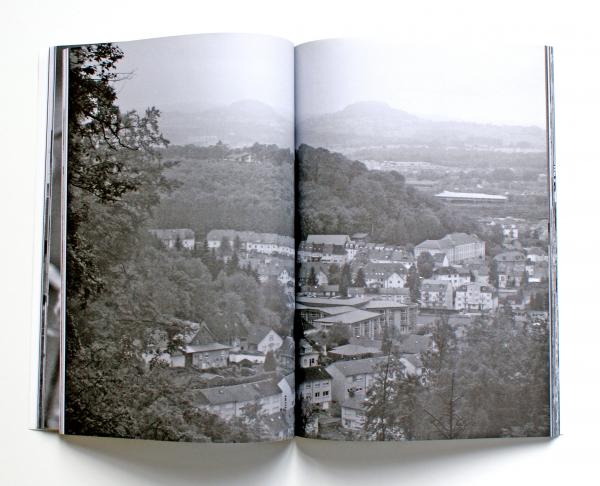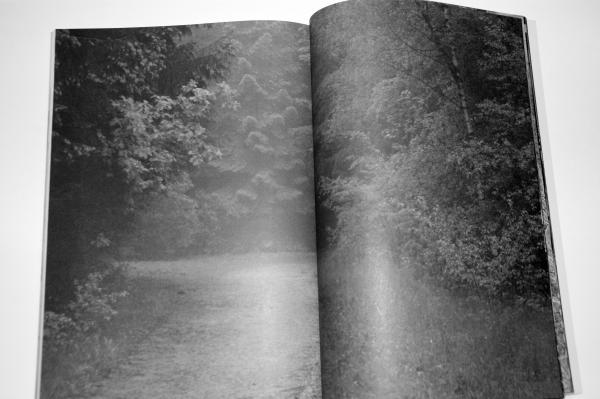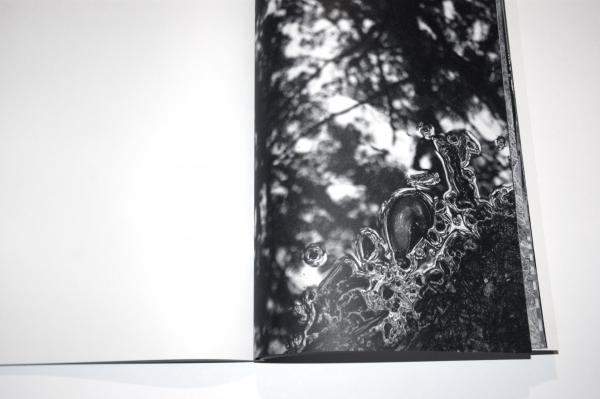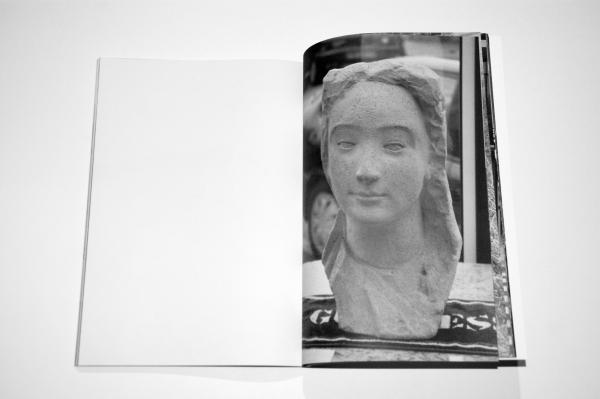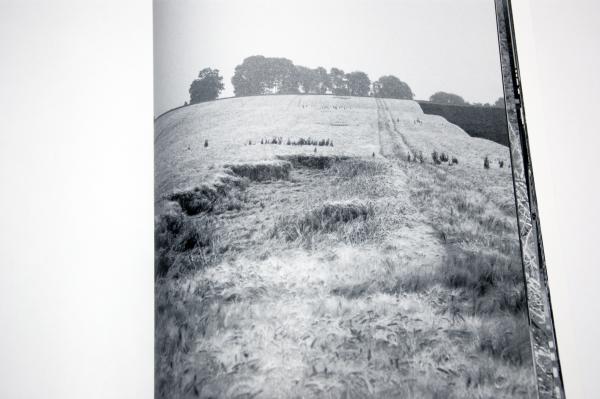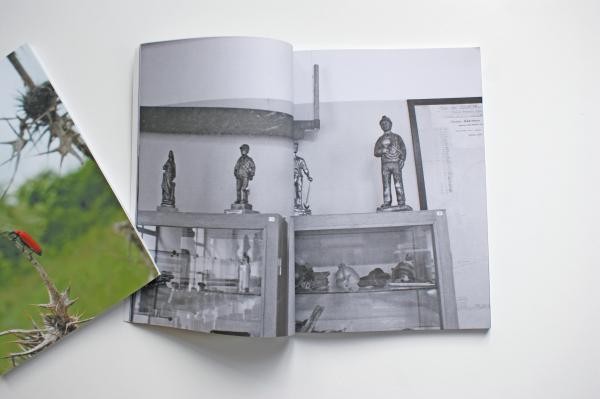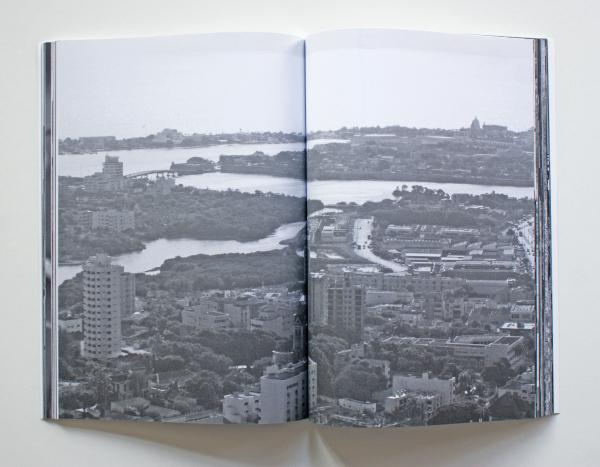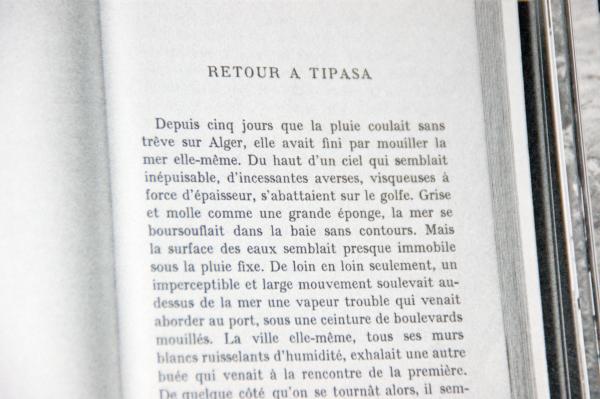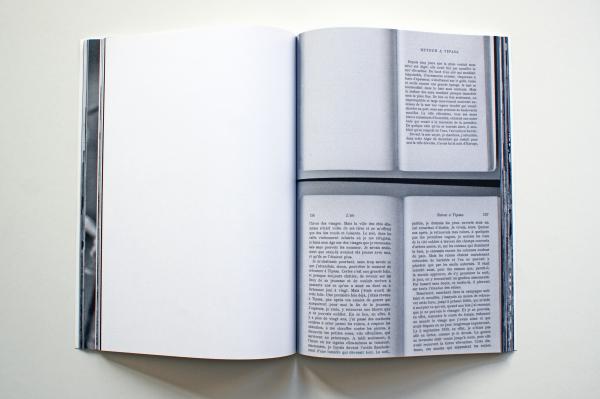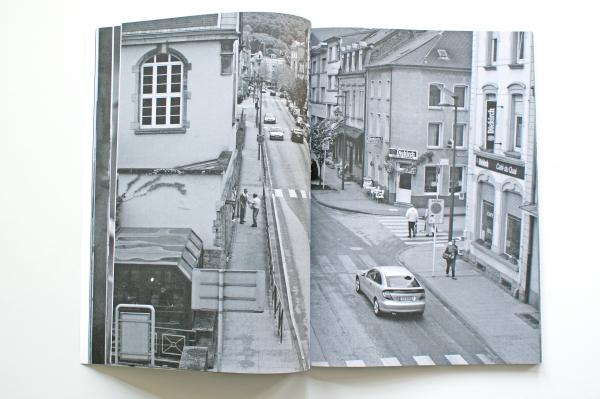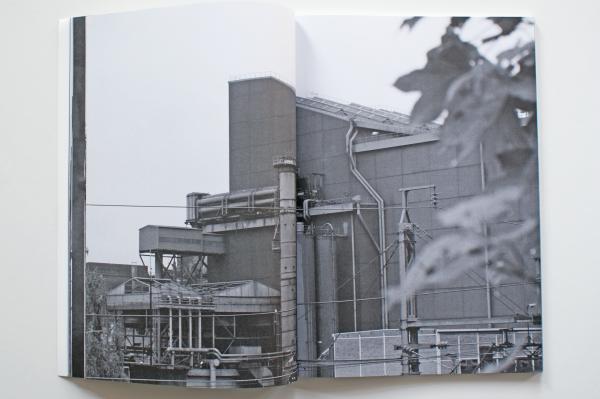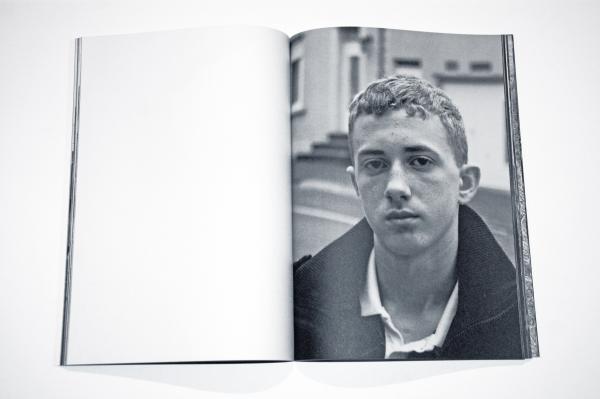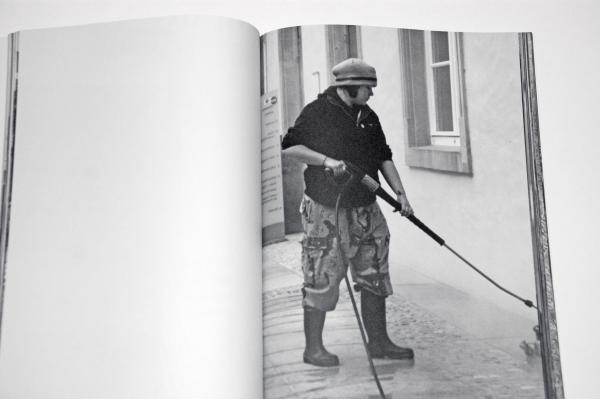One person
Connect
Published in December 2016
Lokaal 01, Anvers
Editor Frederik Vergaert
In December 2016, after budget cuts in the cultural sector in Flanders, the art center Lokaal01, active for years between Antwerp in Belgium and Breda in the Netherlands is forced to close its second Belgian location, after being forced to close its first location in Breda a few years earlier, for similar reasons. This place welcomed many artists through the years, under the brilliant though modest direction of the curator and artist Frederik Vergaert. To conclude the adventure, a “manual” is edited, comprising specific creations of several artists. Some of the artists are invited to intervene both inside the book, and on the book, after printing. The proposal here is a text called “Zero et un” (Zero and one) dedicated to artists friends who exhibited there, which reading is perturbated by black and white drawings. In front of this text is an empty page. The intervention on the printed book consists of printings, in silkscreen, of drawings on the cover of 42 copies of the manual : the number of copies that one can transport in train from Antwerp to Brussels, and back. As if to establish a scale of action, as if to underline the modest margin of movement a single individual is able to have.
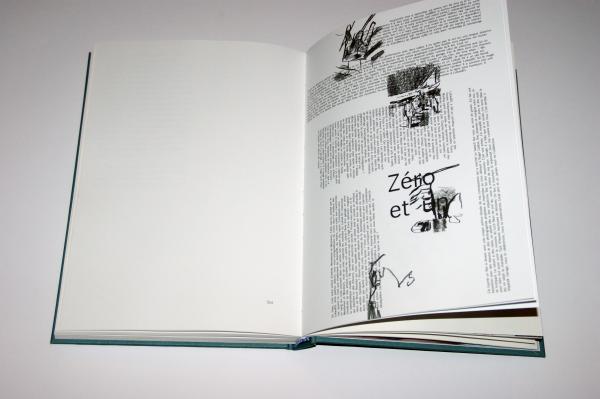
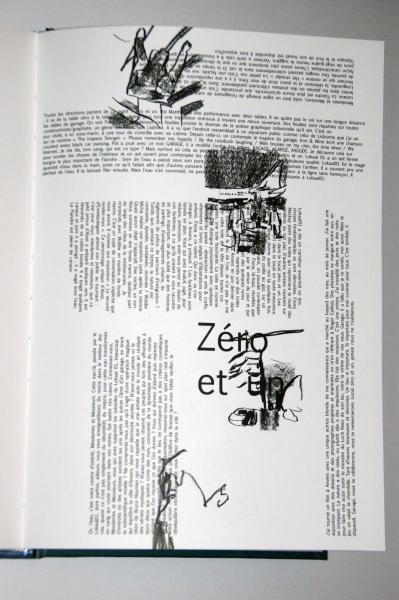
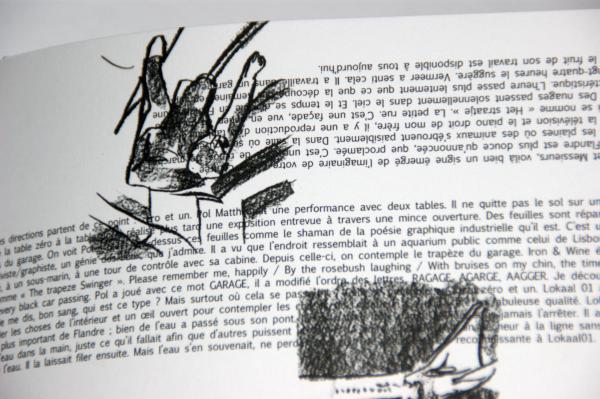
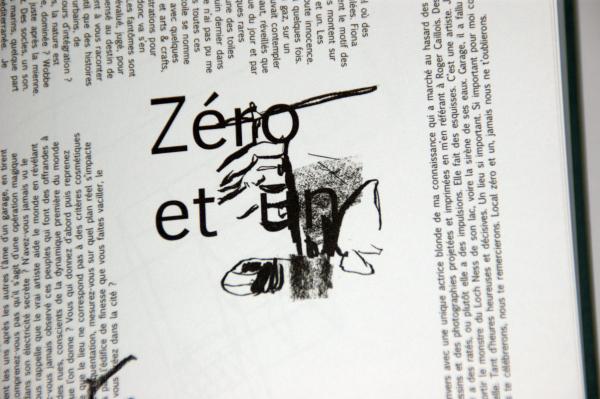
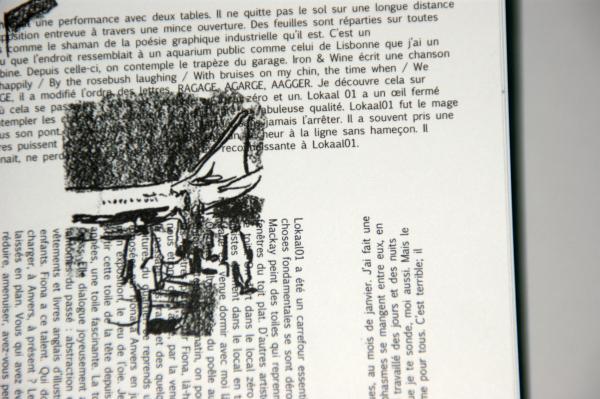
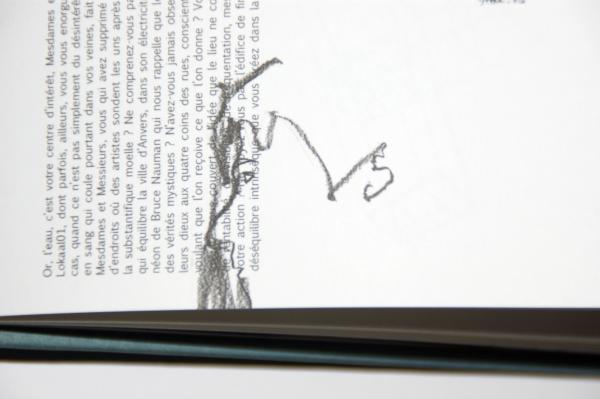
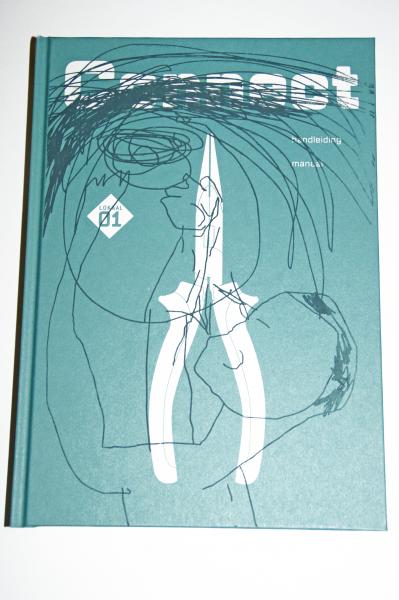
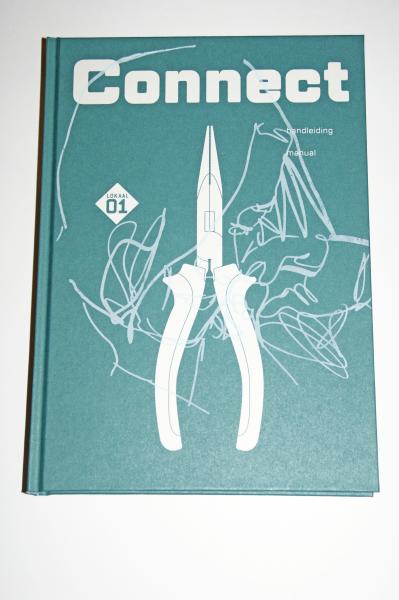
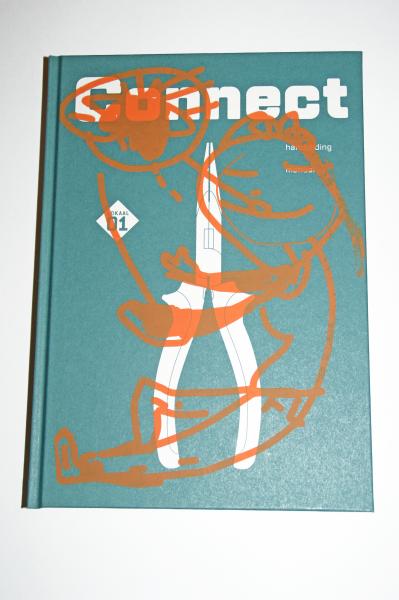
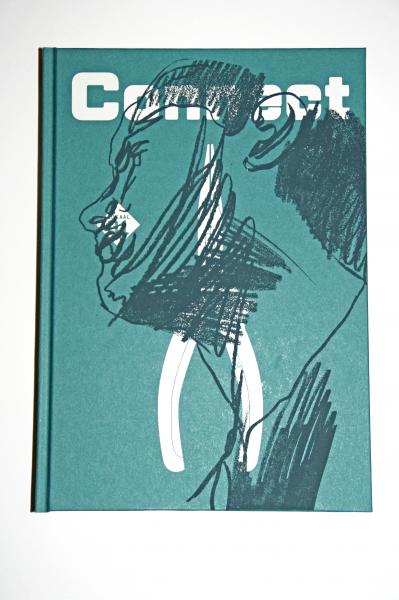
Visitor’s booklet & Mediation booklet for children
Editions realized in the framework of the exhibition "De l’assemblée à l’imprimante (From the assembly to the printer)" ISELP, Brussels 04.11-02.12.2016
Published in November 2016
Editors Pauline Hatzigeorgiou & Laurent Courtens
The exhibition De l'assemblée à l'imprimante is conceived as a semi-clandestine infiltration into the programming of the ISELP art center in Brussels, in the fall of 2016. An initial exhibition opens in September 2016 (Table of content, group show), and a monographic exhibition by Catharina Van Eetvelde follows in December 2016. In the meantime, an exhibition is created, mixing my work with that of the artists in the September and November strands. As if it were a solo show disguised as a group show, or the opposite. The visitor’s booklet, produced by ISELP for the exhibition Table
of content (opposite in yellow) is reprinted as is, but on orange paper, with disruptive typographical signs and a long conversation, transcribed word for word, between myself and the two curators of the exhibition. The result is a visitor’s guide that is both unreadable and at the same time offers an overabundance of reading.
A notebook of games/drawings was also created at the request of the curator Pauline Hatzigeorgiou, in charge of the mediation of the ISELP for children. Presented in the form of a folded A3 sheet, printed on 5 different colored papers, the edition proposes to the children to draw a series of subjects, or to circle a detail of the composition made of drawings mixed on the back, which would represent this subject. Among these subjects to draw or to locate, we find: A boat in the port of Palermo / Two
airports / A fifteenth century fresco / A getaway / The Brussels ring / The smog of Bogota / A room in Venice / Thirty cargo ships loaded with radioactive waste sunk at sea by the mafia / A lime tree...
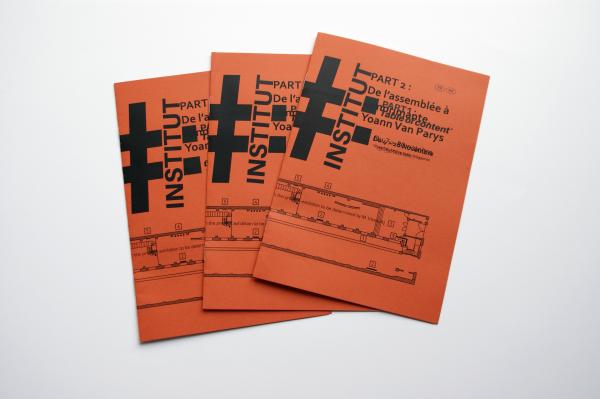
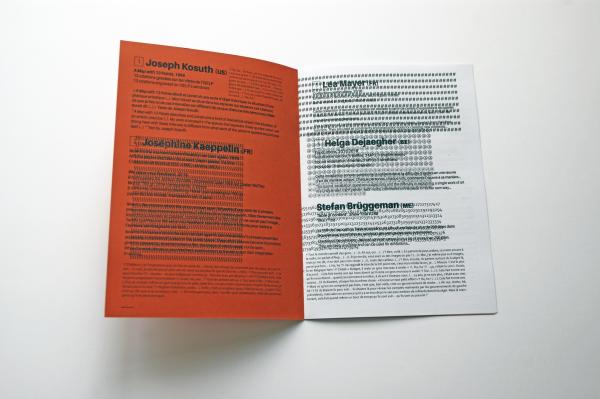
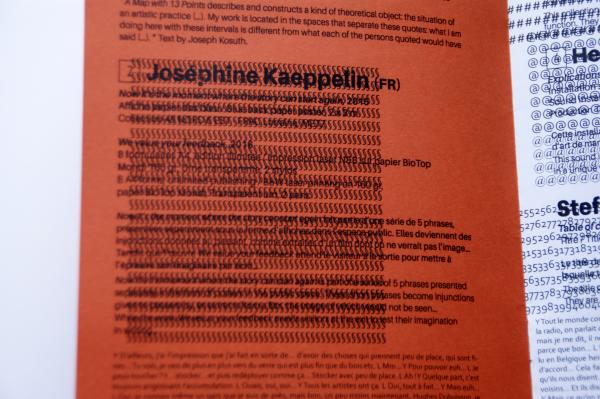
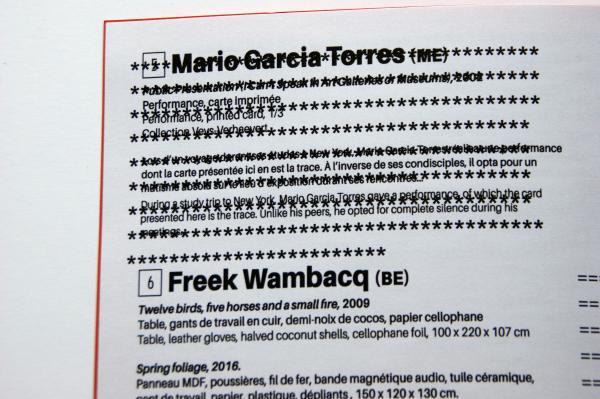
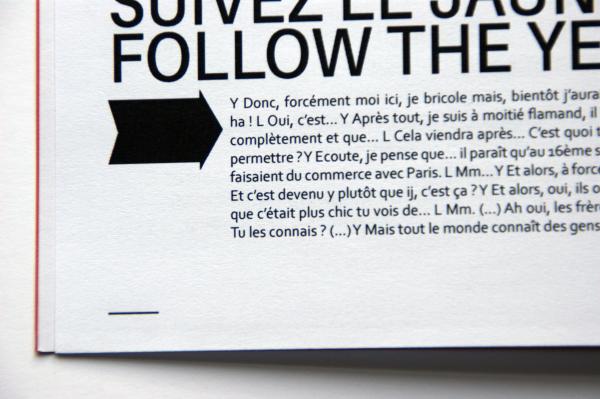

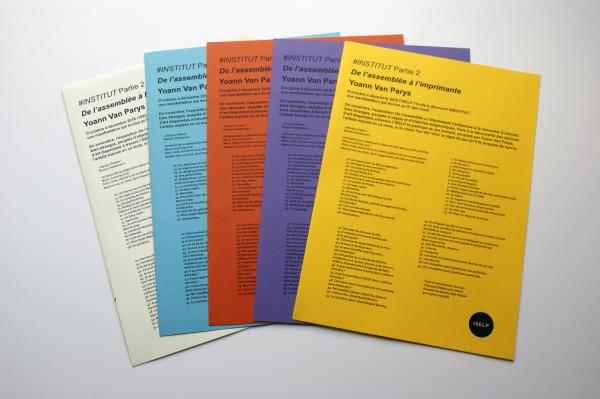
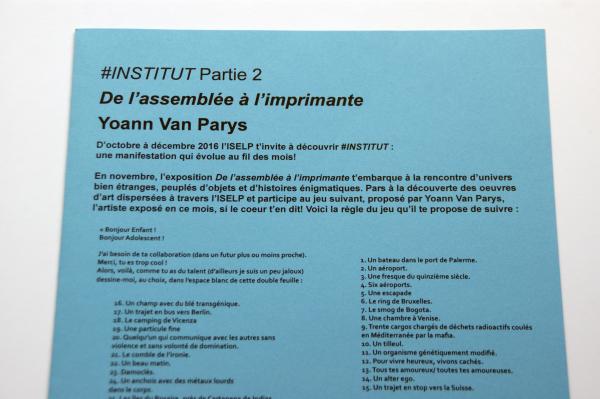
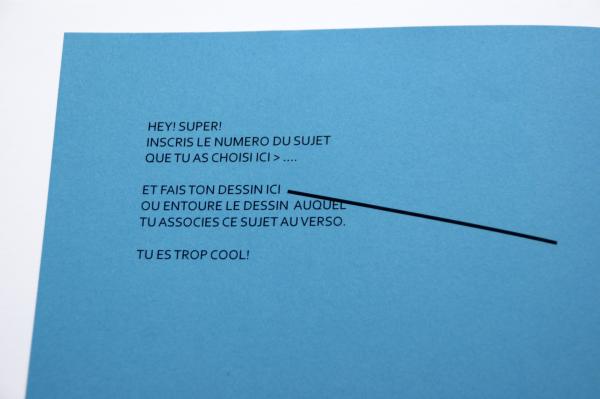
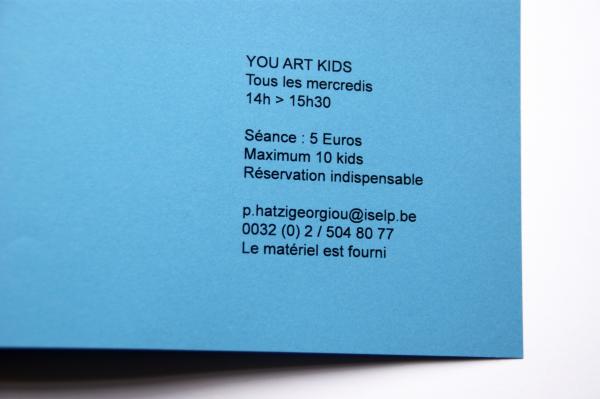
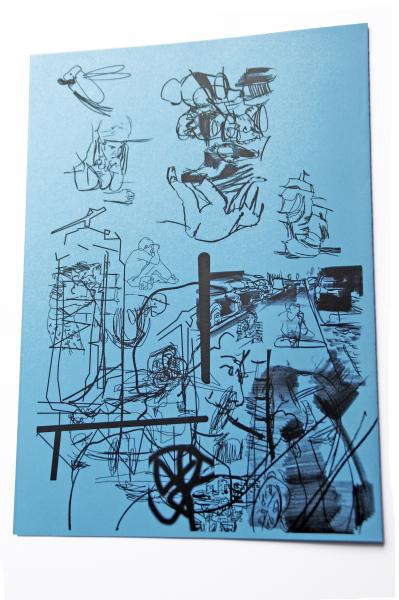
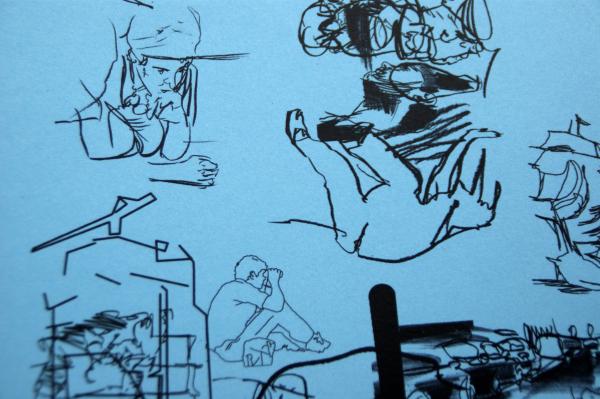
Le projet muet
Magazine Semaines, n°51-12, Analogues Editions, Arles, 2012
Editor Thomas Bernardet
Semaines magazine occasionally entrusts its writing to artists. In 2012, Thomas Bernardet was invited to design an issue. At his invitation, I joined him with a text that narrates the existence of a Brussels artist in the 21st century, named Basile, walking the streets of the Belgian capital and evoking political decisions of the moment. This text is disturbed by handwritten inscriptions by Bernardet, while his photographs are arranged opposite the text.
Excerpt from the text:
"Other evenings find him discouraged from the aftermath of fruitless attempts. He wonders if it is not a delusion to pursue this work with such obstinacy. If, around him, things and years would not come to pass, to slip through his fingers. And for whom, for what? He is struck by the buzzing activity he finds as soon as he leaves the confines of his workshop to go to the supermarket at lunchtime, for example. Trucks drive in all directions. New apartments are being built on the site of a ruined house that was torn down last week. A mother tries to park her car in a narrow space not far from the school where her children are waiting."
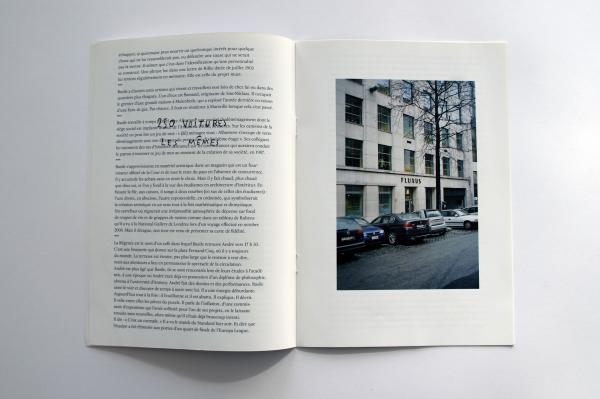

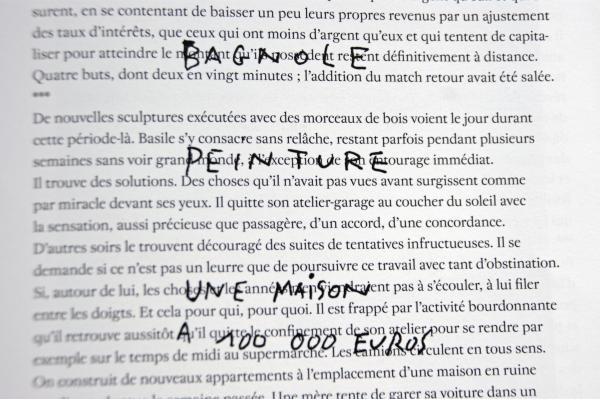
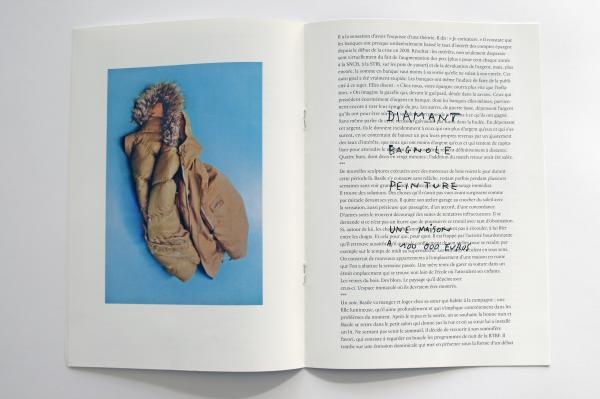
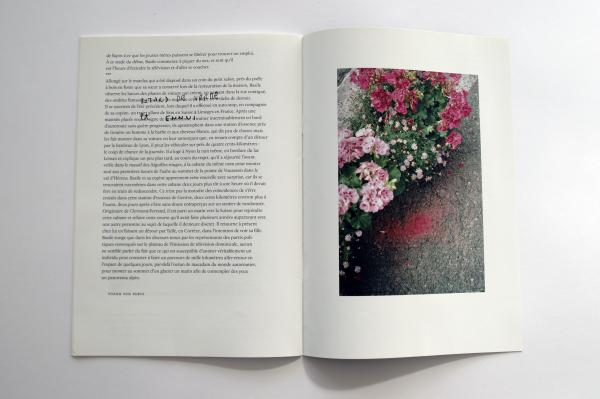
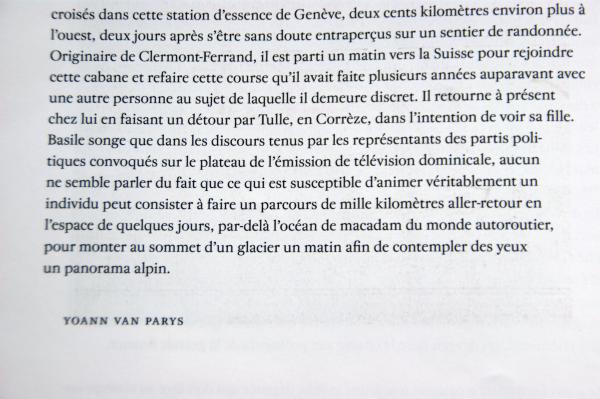
Once (in the nineties)
NY Tijdschrift voor literatuur, kritiek en amusement, n°10, Gent, 2011
Editor Robin Vanbesien
The issue number 10 of the Flemish journal for literature NY is dedicated to the theme of "the nineties". Invited to create the visual part of that issue, the proposal is to insert, in front of the different contributions, a series of drawings made in the nineties, according to different techniques and fancies. As if the goal was to summon "witnesses of that period", represented by these drawings, expressing various aesthetics and skills or clumsiness. While a past epoch, considered retrospectively, often seems tender and innocent, beyond what it used to be really...
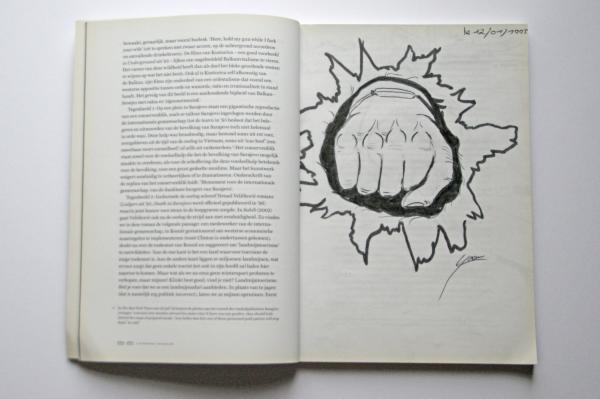
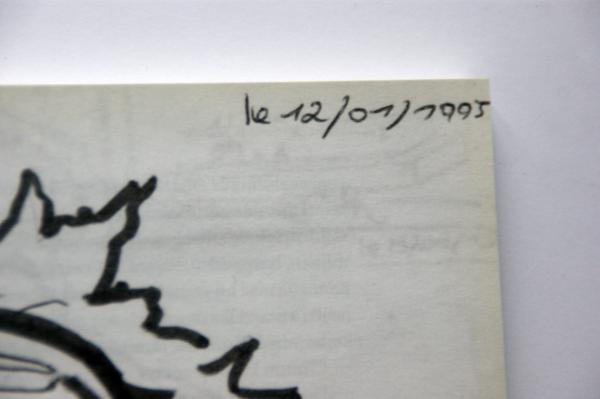
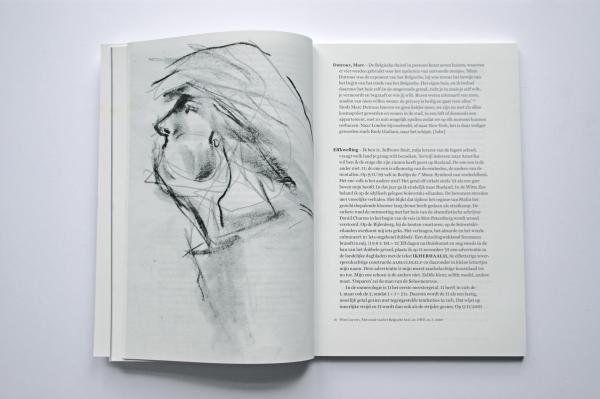
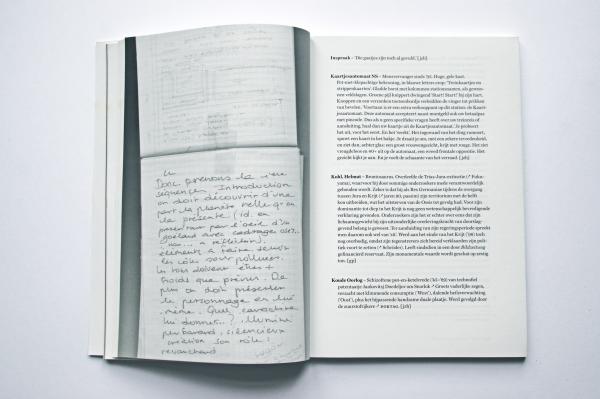
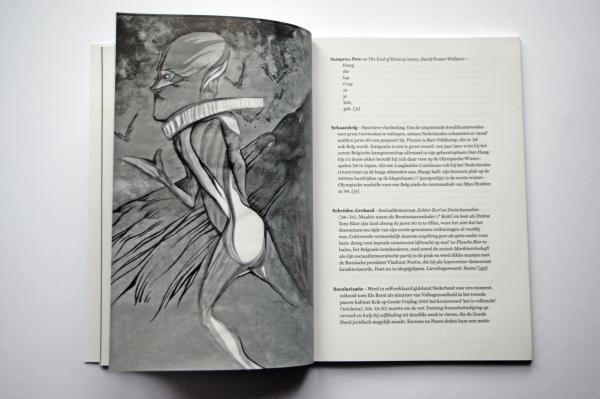
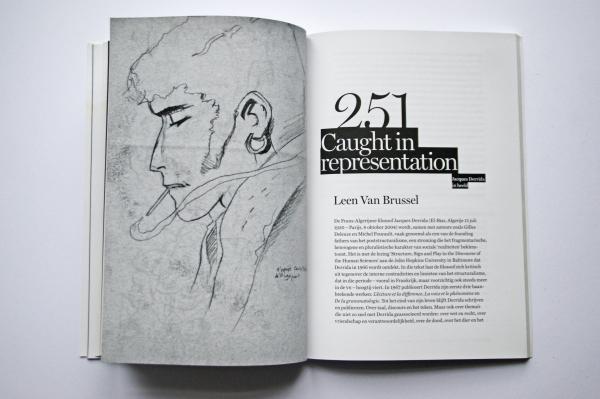
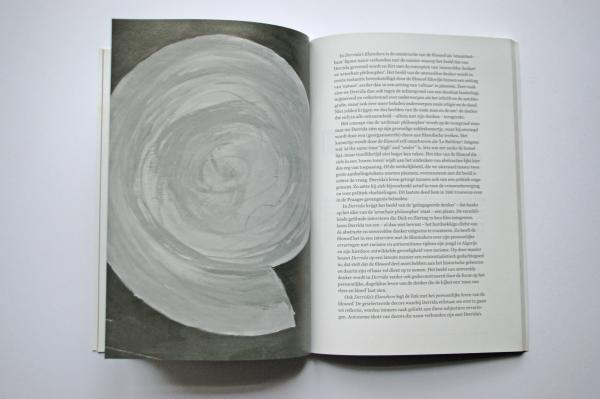
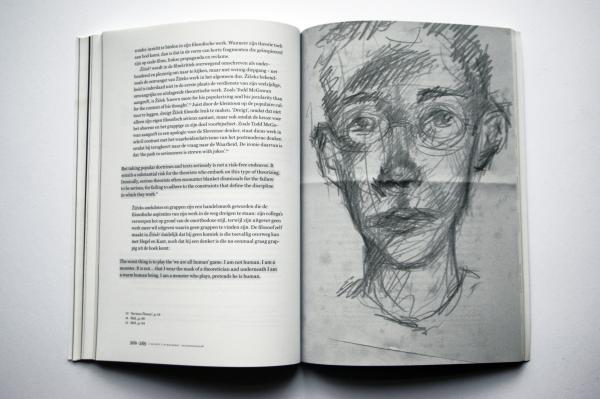
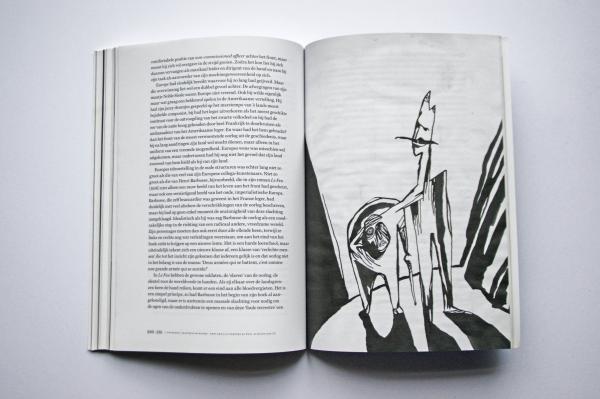
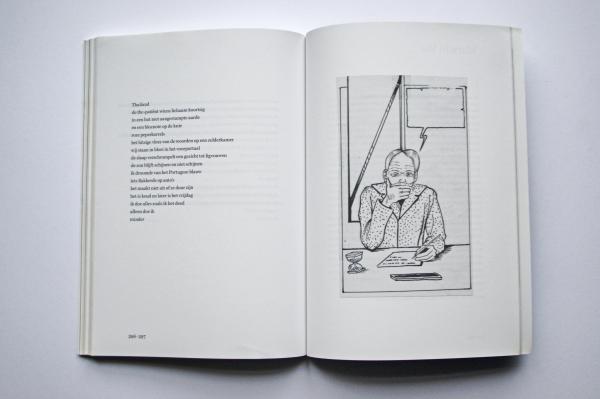
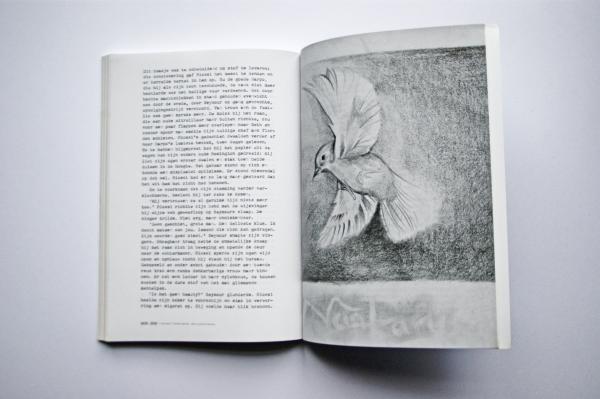
Chipka
Book published in the framework of the group exhibition Chipka, Netwerk, Alost
Published in February 2010
Editor Bram Van Damme
The exhibition Chipka, conceived by Bram Van Damme, focuses on the city of Aalst, and draws a documentary, political, sociological, and dreamlike,metaphorical portrait of it.
In the book accompanying the project, a photograph is published showing one of the factory’s towers, which welcomes visitors from the Aalst train station by day and night with thick wisps of smoke. Further on, there is a text telling the story of half real and half imaginary wanderings in Aalst and its suburbs, written in the first person. Where we meet various characters, telling the present and the past of Aalst. Where we wander through the urban fabric, gleaning here and there observations and anecdotes, while the so-called daily life takes place around.
Exctract from the text :
«The minutes pass and we stand there, both of us, contemplating the rain that falls in gusts on the road in front of us. He suddenly asks me in Flemish where I come from; I tell him I come from Brussels and return his question. He tells me that he comes from Kuwait (I understand Kiewit at first, which I associate with Hasselt) and that he has been living and working in Aalst, at the post office depot, for twenty years. He tells me that he left his country because he didn’t feel good there. I ask him if he left for political reasons. He nods: he says that he now has a Belgian passport, that he can go wherever he wants, all over the world, which he accompanies with a large hand gesture.»
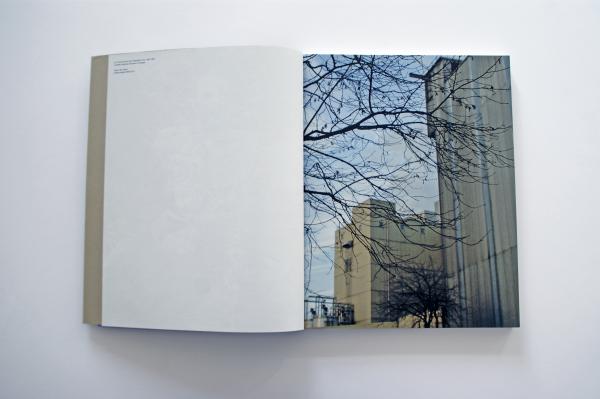
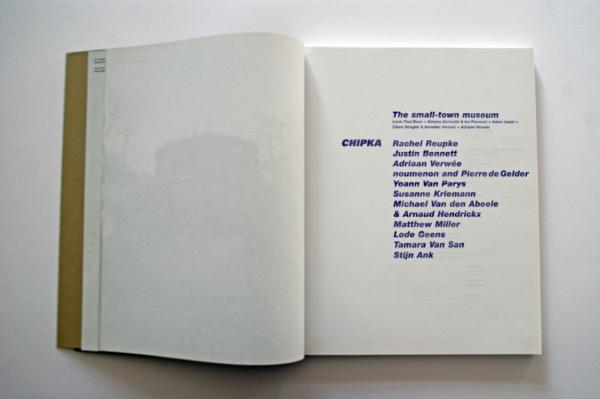
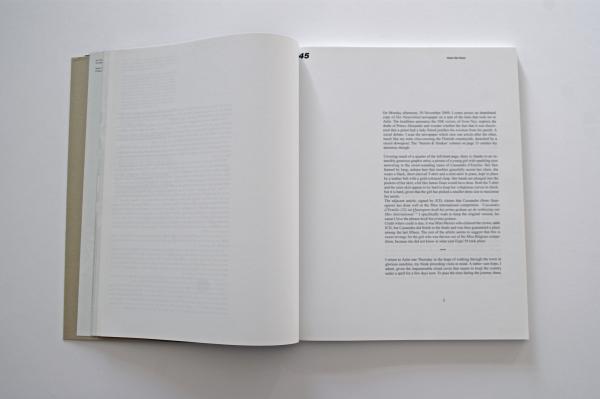
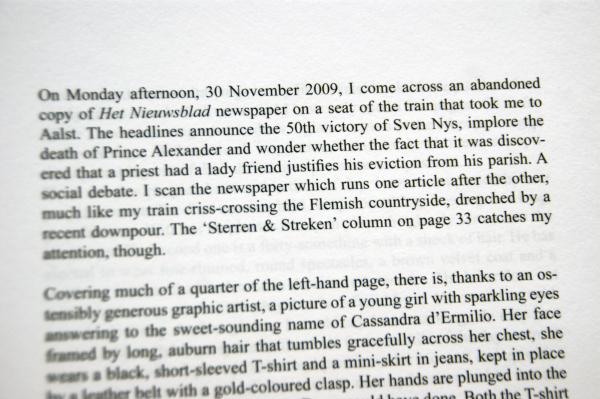
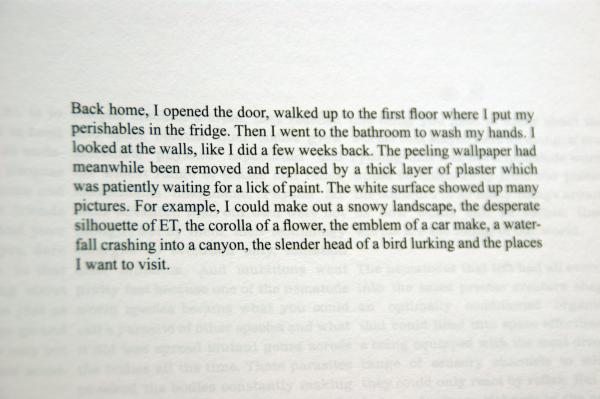
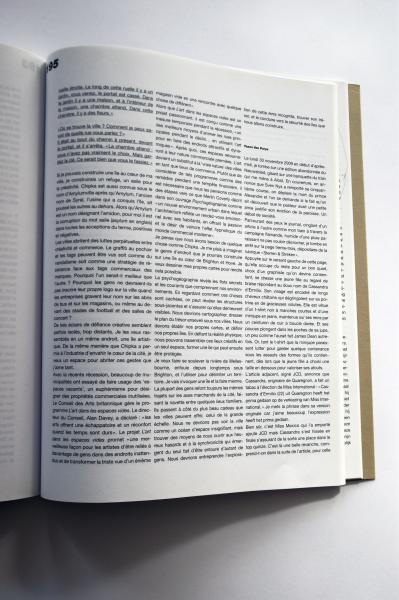
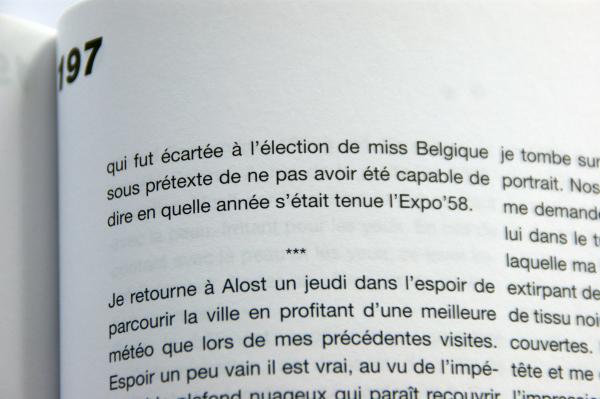

Récit d'un voyage au Luxembourg
Published in October 2009, in the framework of the arts festival Sentiers Rouges
Collaboration to the graphic design Stéphane De Groef
Récit d’un voyage au Luxembourg is created in response to the demand of a public, external work in the framing of an arts festival organised in the south of Luxembourg. It is a photographic book (not a fixed, external work), gathering images taken in villages of the south of Luxembourg (Dudelange, Esch-sur-Alzette, Schifflange...), but also images from Antwerp, De Panne and Brussels in Belgium, and Bogotà in Colombia. The all forms a tacit story, sailing smoothly from one place to another. Images often underline rainy atmospheres, in nuances of grey, and one sees continuums between natural zones and urbanized areas. Some implicit questions are brought in the images about the idea of belonging to a place, both on a personal, existential level, and on a sociological one (Luxembourg being an historical place of migration, related to the steel and coal industries).
